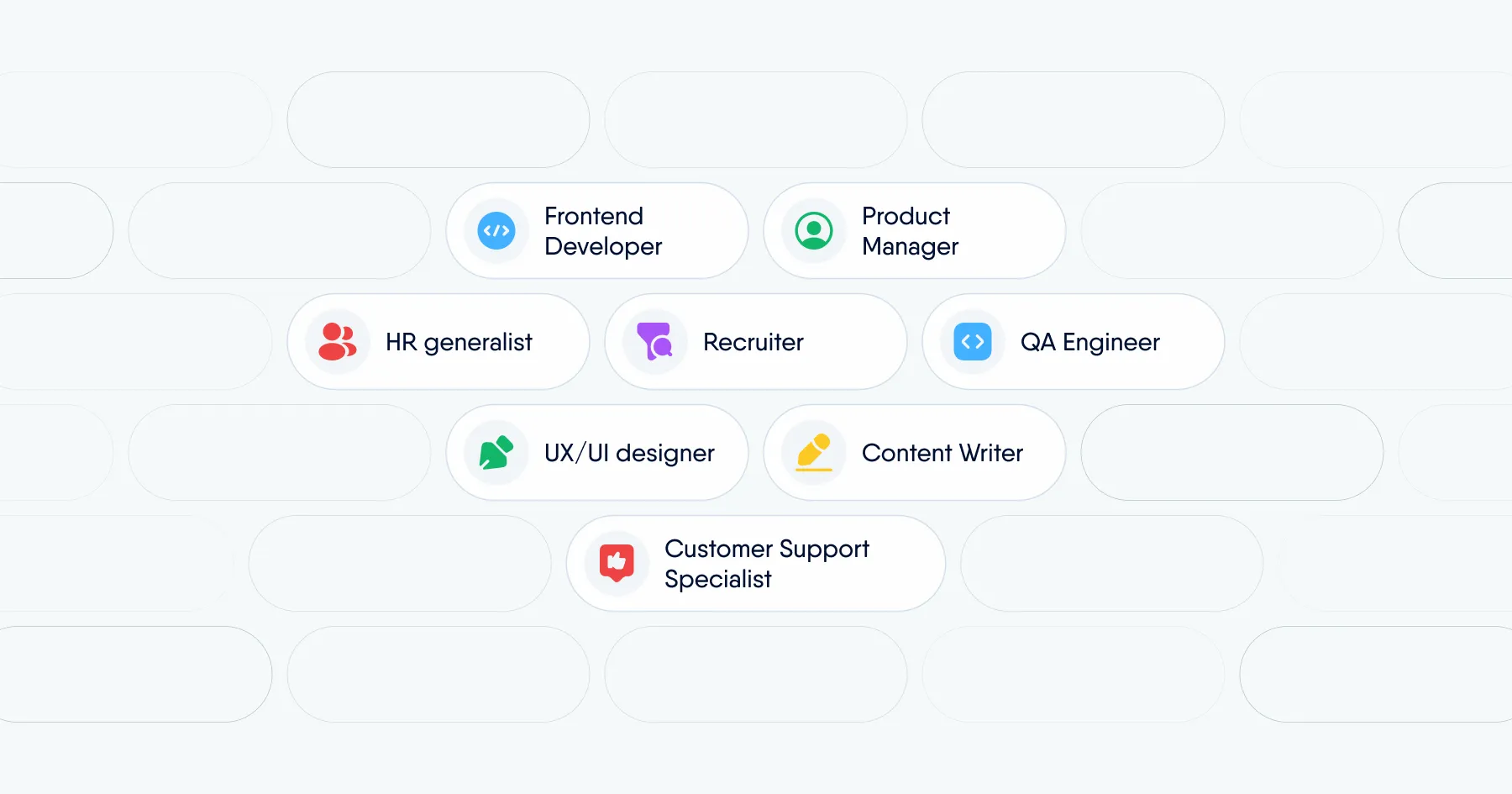Sabbatical leave
What is sabbatical leave?
What is sabbatical leave?
Sabbatical leave is an employer-approved break from work duties, typically lasting several weeks to several months, without terminating the employment contract. Depending on company policy, it may be paid, partially paid, or unpaid. It serves as an HR tool that supports employee well-being, retention, and engagement.
What is the purpose of sabbatical leave?
The primary purpose of sabbatical leave is physical, emotional, and mental rejuvenation. Employees most commonly use this time for:
- Recovery after periods of intensive work or in cases of professional burnout;
- Personal development and skills enhancement;
- Caring for family members or handling family matters;
- Pursuing personal passions;
- Volunteer work;
- Travel.
Is sabbatical leave legally regulated?
In most countries, employers are not legally required to offer sabbatical leave. It’s typically based on a mutual agreement between the employee and employer and structured as part of a company’s non-monetary benefits policy. Rather than being defined by employment law, sabbatical leave is usually governed by internal company policies, making it a voluntary benefit that can vary widely across organizations and industries.
The difference between unpaid leave and sabbatical leave
Unpaid leave is a work break during which the employee receives no compensation, and some of their entitlements, such as vacation accrual or access to health insurance, may be suspended. The specifics depend on the regulations in effect in each country.
Sabbatical leave, on the other hand, may be partially or fully paid and doesn't necessarily involve loss of benefits. Everything depends on how the organization defines its terms within their internal policy framework.
The difference between paid vacation and sabbatical leave
Regular paid vacation is a statutory benefit in most countries, with legal requirements around duration, accrual, and usage that vary by jurisdiction. It’s typically mandated by labor laws and included as part of standard compensation packages.
Sabbatical leave, by contrast, is an additional, non-regulated benefit. It’s individually negotiated and available only by mutual agreement between the employee and employer. Sabbaticals can be part of a company’s retention strategy or a broader benefits program that promotes employee well-being.
The difference between sabbatical leave and a career break
Sabbatical leave is a planned, employer-approved, and time-limited break from work, after which the employee returns to their position. A career break is an independent decision by the employee to completely withdraw from professional life. It typically involves terminating the employment contract and can last anywhere from several months to several years.
When can employees take a sabbatical leave?
The availability of sabbatical leave depends entirely on the organization's policy. Some companies offer this option after a specified length of service – for example, 5, 7, or 10 years as a benefit supporting loyalty, well-being, and personal development. Others treat it as a flexible tool, available in justified situations such as professional burnout, the need to care for family members, or pursuing developmental goals.
Examples of sabbatical leave policies in companies
📌 Tradedoubler Poland bases sabbatical leave on length of service and offers partial pay:
- After 4 years of service, employees are entitled to 30 days off paid at 50%;
- After 7 years of service, employees are entitled to 60 days paid at 60%;
- After 10 years of service, employees are entitled to 90 days paid at 70%;
- After 13 years of service, employees are entitled to 120 days paid at 80%.
To utilize this benefit, employees must obtain approval from their supervisor, team, and country manager and professionally transfer their responsibilities to their replacement.
📌 Monterail grants sabbatical leave to employees with at least 5 years of service. It is fully paid and can last up to one month.
📌 Adobe provides sabbatical leave to permanent employees in the US after five years of continuous employment and a schedule of at least 24 hours per week. The leave must be used within two years of becoming eligible and must be taken as one uninterrupted period.
The length of leave depends on tenure at Adobe:
- 20 business days after 5 years of employment;
- 25 business days after 10 years of employment;
- 30 business days after 15 years of employment;
- 30 business days for every subsequent 5 years of employment.
Benefits of implementing sabbatical leave
Sabbatical leave has the potential to improve employee well-being while simultaneously strengthening team functionality.
Benefits for employees
- An extended break from daily work allows for energy restoration and improves both physical and mental well-being.
- Stepping away from professional responsibilities can effectively prevent burnout and declining engagement.
- Paid leave provides excellent opportunities for learning, taking courses, developing hobbies, or pursuing projects for which there was previously insufficient time.
- For many people, sabbatical leave offers a chance to better nurture their relationships and prioritize their health.
- Returning to work after an extended break stimulates innovation and readiness to take action.
Benefits for organizations
- The availability of sabbatical leave as part of a benefits package can influence employees' decisions to remain with the organization.
- Employees increasingly value flexible approaches and rest opportunities, and sabbatical leave can be a key differentiator for companies.
- Employees returning from sabbatical leave often view company processes and structures with greater perspective, allowing them to identify inefficiencies that were previously overlooked.
- One person's absence creates opportunities for others to learn new areas and become more engaged in company operations.
- Teams that take on responsibilities of absent colleagues often integrate better and learn to operate in changing environments.
- Temporary role changes can positively impact group dynamics and working methods.
Challenges associated with sabbatical leave
Despite numerous benefits, sabbatical leave presents specific challenges for both organizations and employees.
Challenges for organizations
Sabbatical leave may inspire employees to change career paths or resign from their current role, resulting in the loss of valuable talent.
Extended employee absence requires not only task delegation but also thoughtful onboarding of replacement personnel. Lack of preparation can disrupt operational continuity and delay execution of key initiatives.
Without a clear succession plan, additional responsibilities are distributed unevenly, leading to team overload and decreased efficiency.
The absence of clearly defined criteria for granting sabbatical leave can undermine trust in the organization and negatively impact its reputation as an employer.
The benefits of sabbatical leave are often long-term and difficult to measure. There's a lack of universal metrics that would allow objective assessment of leave's impact on motivation, efficiency, or loyalty.
Paid sabbatical leave generates direct costs and requires budget allocation while simultaneously accounting for the impact of absence on business results.
Challenges for employees
Extended breaks can make it difficult to readjust to changed project environments, technology, and team dynamics. Return requires intensive knowledge updates and readaptation.
The absence of detailed internal regulations doesn't guarantee a return to an identical position with the same scope of responsibilities.
In some roles, taking a break means withdrawing from important initiatives, which may slow promotion paths or limit influence on strategic decisions.
Compensation policies during sabbatical leave vary between organizations – from completely unpaid to partially funded. This creates a financial barrier for a significant portion of employees.
Reintegrating with the team after several months of absence can prove challenging, especially in evolving organizational structures and cultures.
In corporate cultures focused on continuous productivity, the decision to take sabbatical leave may be misinterpreted as a symptom of burnout or lack of professional commitment.
How to use an HR platform to manage sabbatical leave?
A modern HR platform, such as PeopleForce, can help you streamline sabbatical leave management. You can use it to:
Collect team feedback through pulse surveys or eNPS and quickly identify individuals who would benefit from extended rest;
Organize regular 1:1 meetings and discuss employee well-being and their development plans, for which sabbatical leave may be a natural next step;
Manage leave pools calculated based on total tenure, including thresholds that qualify employees for sabbatical leave;
Track team absences and better plan resources and task allocation;
Create custom policies and workflows – such as sabbatical leave applications, approval workflows, or return conditions after extended absence.
Sabbatical leave is an interesting and increasingly popular human resources management tool that goes beyond traditional employee benefits. While it requires thoughtful implementation and involves operational challenges, it will help you effectively strengthen talent retention and prevent professional burnout within your team.

